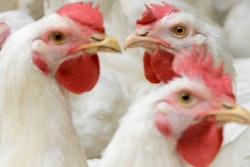In testimony on July 31 before the U.S. Environmental Protection Agency, the U.S. rendering industry and the California Advanced Biofuels Alliance called for a higher Renewable Fuel Standard (RFS) volume to increase production of environmentally-friendly biodiesel and renewable diesel.
EPA gathered comments at a public hearing in Ypsilanti, Michigan about its recent proposal that would flat line RFS volume for biomass-based diesel in 2021. Biomass-based diesel includes both biodiesel and renewable diesel.
Doug Smith of Baker Commodities, Inc., Assistant Vice President of R&D and Quality Assurance, a rendering company and biodiesel producer, urged EPA to adopt a higher RFS volume for biomass-based diesel than proposed by the agency in June. Smith spoke on behalf of the National Renderers Association (NRA) and the California Advanced Biofuels Alliance (CABA). Smith chairs the NRA’s Biofuels Committee and is CABA’s former secretary.
Rendered products are widely used in production of biomass-based diesel. Rendering provides approximately 30% of the feedstock used to create biodiesel and renewable diesel per year. Of that, 13% is rendered animal fat and 16% is leftover used cooking oil (UCO) from restaurants that is collected and recycled by renderers like Baker.
“We urge EPA to increase the RFS for biomass-based diesel by 330 million gallons to 2.76 billion gallons in 2021,” said Smith. “Sufficient biofuel plant capacity and distribution infrastructure exists to meet this increased level. The rendering industry believes additional volumes of its feedstock will be available to contribute to a growing biomass-based diesel industry capable of achieving this higher RFS.”
Projected expansion in livestock and poultry production, combined with more restaurant dining and demand for pre-cooked meals, is anticipated to result in growing volumes of feedstock produced by renderers.
Roughly 50% of meat from livestock and poultry is considered inedible by Americans. Rendering reclaims these leftovers by safely separating them into fats and proteins. The rendering process recycles unwanted food into ingredients for new products such as biodiesel and other items - making rendering a green and sustainable practice.
“Robust demand for meat in the coming decade is expected to provide incentives for continued growth of the U.S. livestock and poultry sector,” explained Smith, citing information from the U.S. Department of Agriculture. “More meat production will lead to higher volumes of rendered animal leftovers. The result will be additional animal fats available in the market.”
UCO production is also expected to increase due to increasing consumer demand for meals prepared outside the home. This includes more frequent in-restaurant dining and use of pre-cooked foods such as ready-to-eat kits and carry out/meal delivery. This market is rapidly developing due to the prevalence of a fast paced lifestyle, especially in populated urban areas.
















